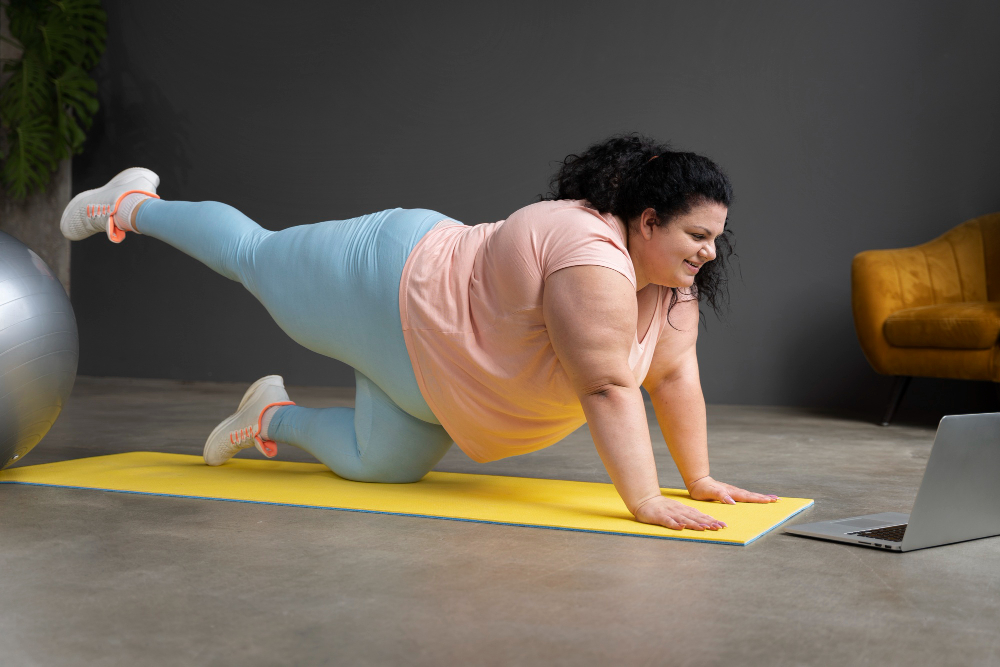One of the most persistent myths about yoga is that it is only for people who are naturally flexible. This misconception often discourages beginners from trying yoga, believing that they must already have impressive flexibility to participate. However, this is far from the truth. Yoga is designed for everyone, regardless of age, body type, or flexibility level. The goal of yoga is not just to achieve complex poses but to enhance physical and mental well-being.
Understanding Yoga Beyond Flexibility
Yoga is more than just stretching—it’s about balance, strength, and mindfulness. Flexibility is not a requirement to start. Here’s how yoga benefits everyone, regardless of flexibility.
Yoga Focuses on Strength and Balance
While flexibility is one of the many benefits of yoga, it is not the primary focus. Many yoga poses, or asanas, build strength, improve posture, and enhance balance. Practices such as Hatha yoga, Vinyasa yoga, and Power yoga emphasize muscular endurance and core strength, which are just as important as flexibility.
Yoga is a Journey, Not a Competition
Unlike competitive sports, yoga is a personal practice that encourages self-awareness and gradual progress. Beginners may start with gentle stretches and gradually improve their flexibility and strength over time. Yoga teachers emphasize listening to one’s body and modifying poses to suit individual abilities.
Yoga for All Body Types
Yoga is for everyone, regardless of shape or size. It focuses on strength, flexibility, and mindfulness, adapting to all bodies. Here’s how to make yoga work for you.
Dispelling the “Ideal Yoga Body” Myth
Many people believe that only lean and athletic individuals can practice yoga effectively. However, yoga is for all body types and fitness levels. There are modifications available for every pose to make them accessible to beginners and individuals with different physical abilities.
Adaptive Yoga for Different Needs
Individuals with mobility limitations or injuries can still enjoy the benefits of yoga. Chair yoga, restorative yoga, and Iyengar yoga utilize props such as blocks, straps, and bolsters to support different body types and abilities. These adaptations make yoga an inclusive practice, not limited to those who can bend easily.
The Mental Benefits of Yoga: More Than Just Poses
Yoga is not just about physical movement—it nurtures mental well-being. It helps reduce stress, enhance focus, and promote emotional balance. Here’s how yoga benefits the mind.
Yoga Enhances Mindfulness and Mental Clarity
Yoga is not just about the physical postures; it incorporates breath control (pranayama) and meditation, which promote relaxation and mental clarity. Studies show that regular yoga practice can reduce stress, anxiety, and depression, making it a powerful tool for mental health.
Breathing Techniques Improve Overall Well-Being
Controlled breathing, or pranayama, is a core component of yoga that enhances lung capacity, reduces stress levels, and improves focus. Breathing exercises like Ujjayi breath and Nadi Shodhana (alternate nostril breathing) help regulate the nervous system and promote a sense of calm.
Yoga for Beginners: How to Get Started
Starting yoga can feel overwhelming, but a simple approach makes it accessible. Building a foundation with basic poses and techniques is essential for progress. Here’s how to begin your yoga journey.
You Do Not Need to Be Flexible to Start
Beginners often hesitate to start yoga because they feel they are not flexible enough. However, flexibility improves with consistent practice. Even if you struggle with touching your toes initially, regular stretching and movement will gradually enhance mobility.
Beginner-Friendly Yoga Poses
If you are new to yoga, start with these accessible poses:
- Mountain Pose (Tadasana): Improves posture and balance.
- Downward-Facing Dog (Adho Mukha Svanasana): Strengthens arms and legs while gently stretching the spine.
- Child’s Pose (Balasana): Provides relaxation and stretches the lower back.
- Warrior I (Virabhadrasana I): Builds strength in the legs and enhances focus.
Seeking Guidance from a Certified Instructor
A qualified yoga teacher can help beginners practice safely and correctly. Many yoga studios offer beginner classes that focus on foundational poses, alignment, and breathing techniques.
Common Myths About Yoga Debunked
Yoga is often misunderstood, leading to myths that discourage beginners. Understanding the truth is essential for embracing its benefits. Here are common yoga myths and the facts behind them.
1. Yoga is Only for Women
Yoga originated over 5,000 years ago and was traditionally practiced by men. Today, it is a universal practice that benefits everyone, regardless of gender.
2. You Must Be Young to Practice Yoga
People of all ages can practice yoga. Senior yoga programs focus on gentle movements that enhance mobility, reduce joint pain, and improve overall well-being.
3. Yoga is a Religious Practice
Although yoga has roots in ancient spiritual traditions, modern yoga is primarily a holistic health practice that promotes physical and mental well-being. It is not tied to any particular religion and is practiced by people from all backgrounds.
4. Yoga Takes Too Much Time
Even 10–15 minutes of yoga daily can provide significant benefits. Many people incorporate short yoga sessions into their morning or bedtime routines to improve flexibility, reduce stress, and boost energy levels.
Final Thoughts: Yoga is for Everyone
Yoga is an inclusive practice that welcomes individuals of all flexibility levels, body types, and ages. It is not about how flexible you are but about how yoga makes you feel. Whether you are a beginner or an advanced practitioner, yoga offers countless physical and mental health benefits. If you have been hesitant to start yoga due to flexibility concerns, now is the perfect time to begin your journey.


Leave a Reply